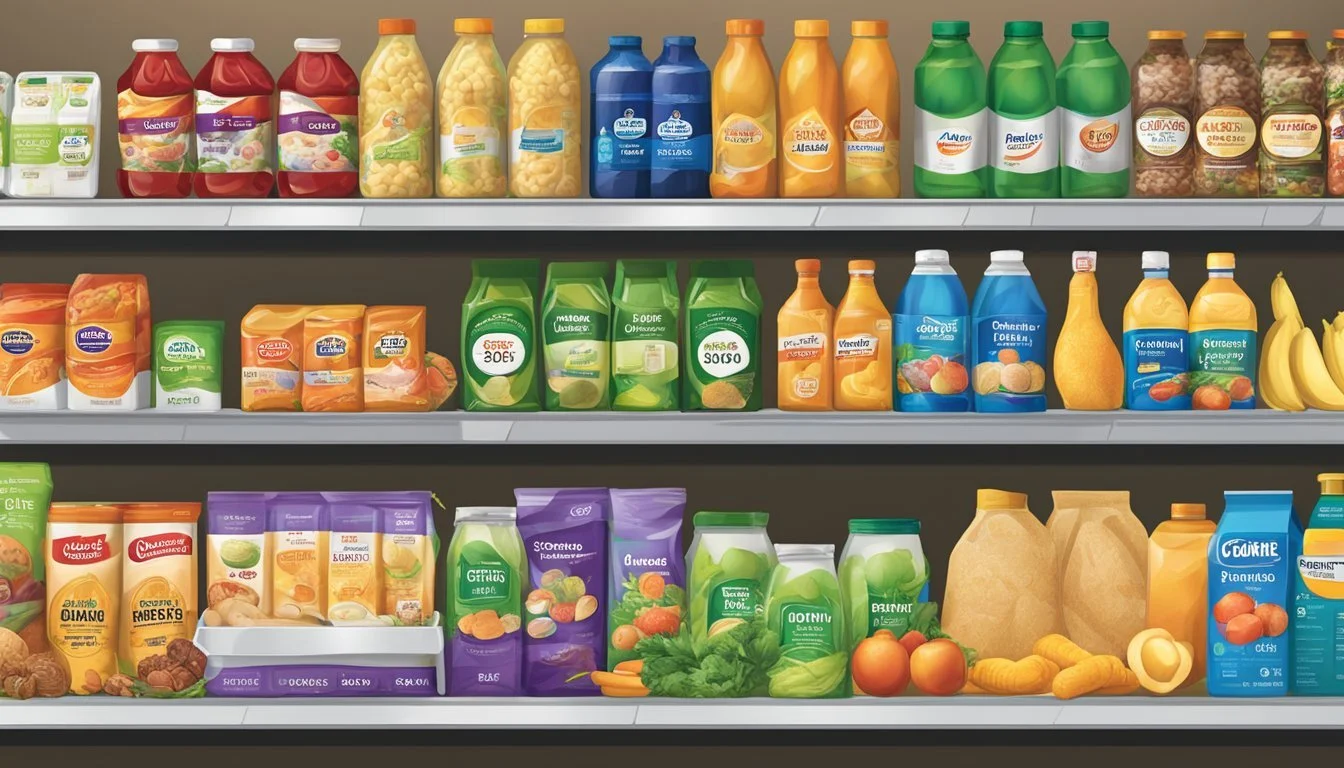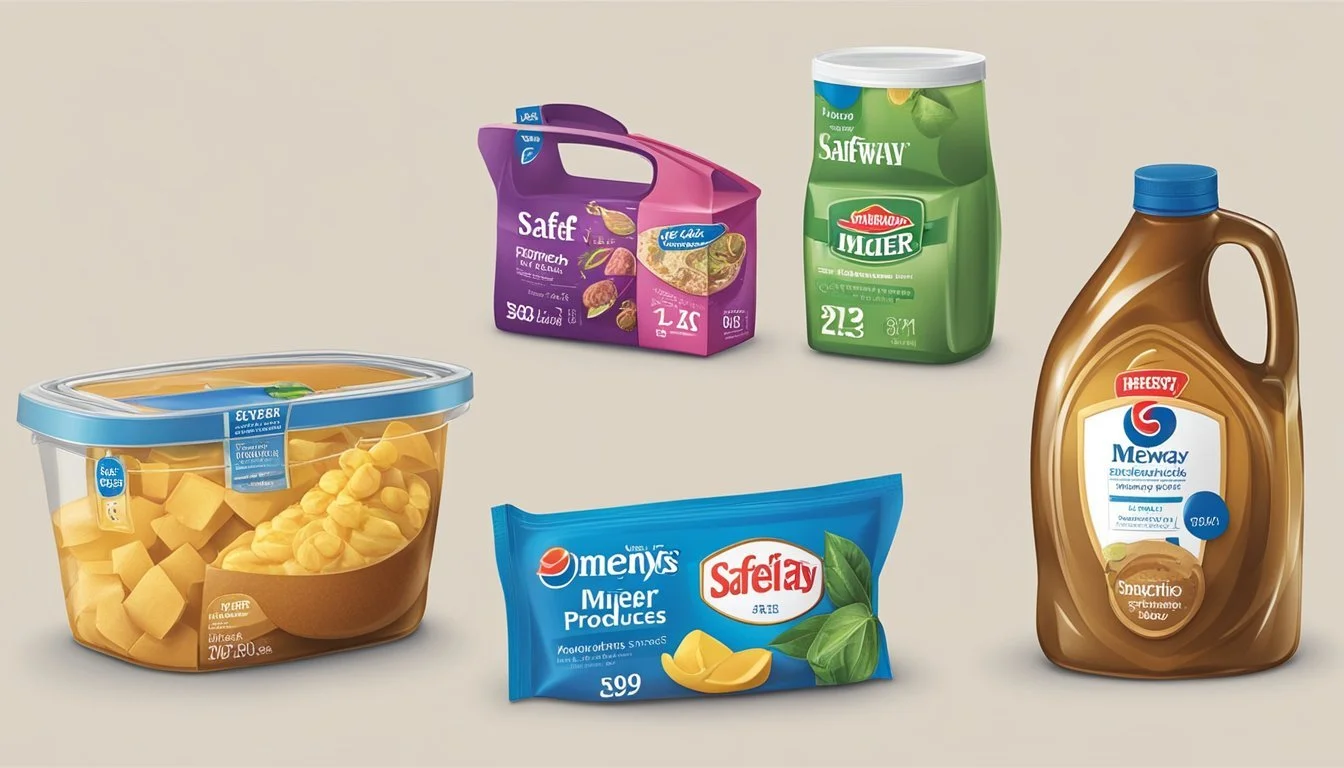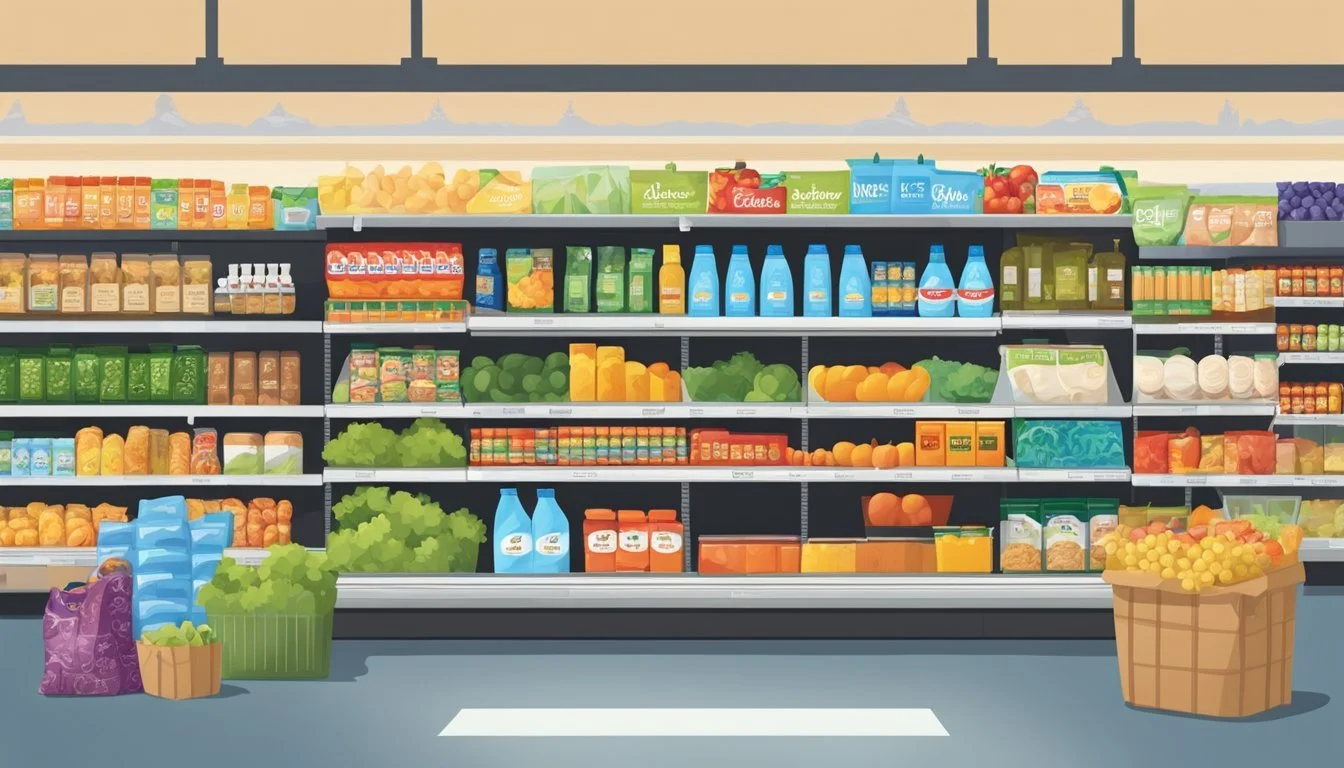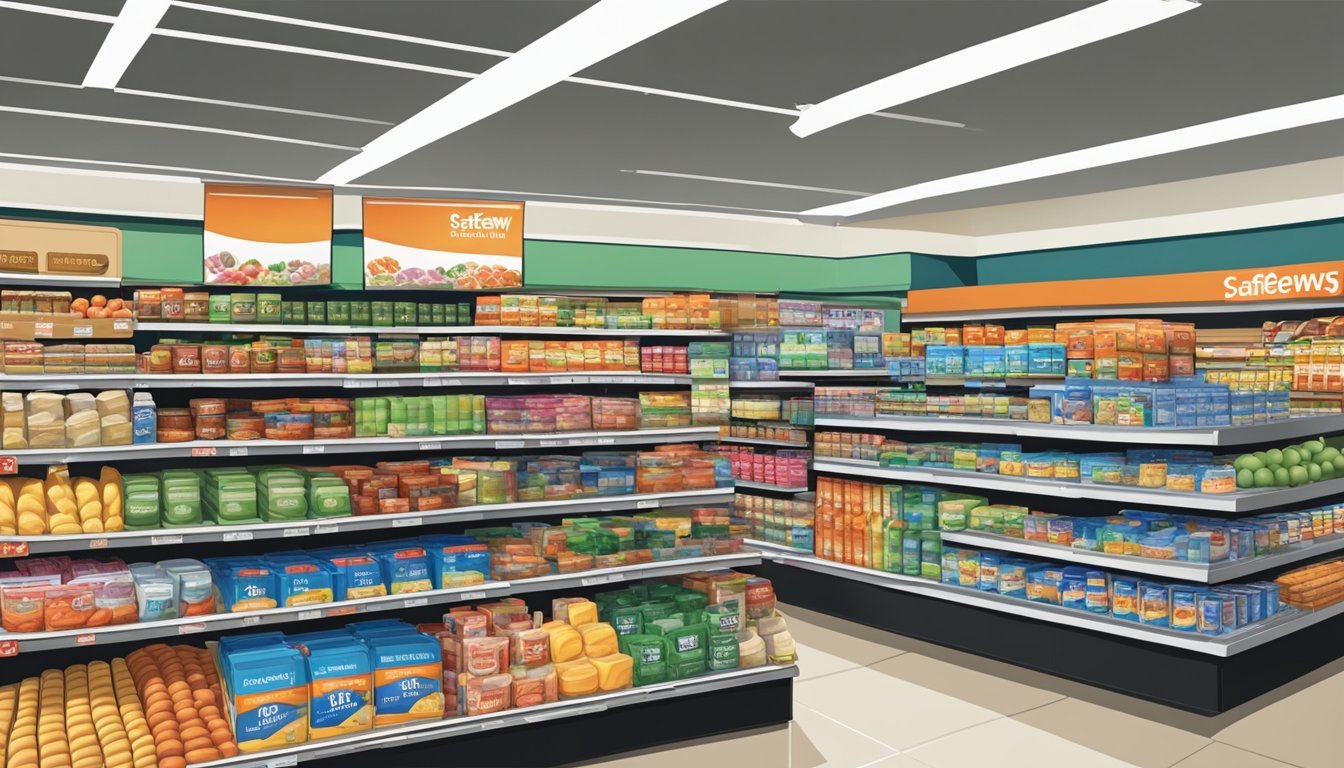Is Safeway Cheaper Than Meijer?
Comparing Grocery Store Prices
Part of Our Grocery Store Guide with Details on Safeway Prices and Meijer Prices
When shopping for groceries, consumers often look for the best value for their money, which frequently leads to a comparison of supermarket chains. Safeway and Meijer are two large grocery stores with significant presence in various regions across the United States. Price comparison between these two can provide insights into where consumers might find more cost-effective shopping options.
Safeway, with its numerous locations primarily on the West Coast, has established itself as a convenient choice for many shoppers. Meijer, based in the Midwest, operates supercenters that combine a full grocery store along with a wide range of general merchandise. Both chains are known for offering a variety of products, but their pricing strategies can differ. Understanding which store offers lower prices on average may require a detailed look at specific product categories and regional pricing trends.
While some studies and surveys suggest that stores like Walmart and Aldi often beat competitors in price comparisons, the Safeway versus Meijer debate is more nuanced. Each store might offer better deals in different departments or have periodic promotions that affect overall affordability. The key for consumers is to analyze the prices of items they purchase regularly, as these will have the greatest impact on their budgets over time.
Understanding Grocery Pricing
In the complex landscape of grocery pricing, numerous factors come into play that can influence the overall cost at checkout. Prices can vary widely depending on location, brand, and other market dynamics.
Factors Influencing Prices
Store Brand vs National Brand: Store brands, also known as private labels, are typically less expensive than national brands. The cost savings in branding and marketing for store brands are often passed on to the consumer, leading to lower prices. For example, Meijer's own brand products likely provide more budget-friendly options compared to equivalent items from national brands.
Product Categories: Different categories can have varying baseline costs. For instance, organic produce or specialty items usually command higher prices due to more costly production processes or sourcing methods.
Price Variation by Location
Geographic Area: Prices can vary based on the store's location, primarily due to differences in the cost of living, transportation costs, and local competition. Thus, the same chain, be it Safeway or Meijer, might have different pricing for various locations.
Local Competition: The presence of other grocery stores in the area affects pricing strategies. For example, if a Meijer store is located near a Safeway, the two may adjust their pricing to remain competitive in that particular market.
Store Brands vs. National Brands
Cost-Benefit: Store brands are offered as a cost-effective alternative to national brands, giving consumers an option that often results in savings without a significant compromise on quality.
Variety: Both Safeway and Meijer offer a variety of their own store brands across different categories, which can help them stay competitive on price with one another.
Profile of Safeway
Safeway operates as one of the established grocery retailers in the United States, known for its range of products and specific pricing strategies. Its presence and approach to pricing reflect the company's adaptation to various consumer demands and market trends.
Locations and Market Presence
Safeway maintains a significant footprint across the United States, with their stores predominantly clustered in the western and central parts of the country. Each location is strategically chosen to serve a diverse customer base and is integrated into the fabric of many communities. Safeway's locations are easily accessible and strategically positioned to ensure a steady stream of consumers seeking produce, meat, deli items, and more.
Range of Products
The stores pride themselves on offering a wide array of products, including but not limited to fresh produce, quality cuts of meat, and extensive deli selections. Customers can expect to find a comprehensive suite of grocery items from national brands as well as Safeway's own private labels, which are designed to provide value and savings without compromising on quality.
Safeway's Pricing Strategy
Safeway employs a competitive pricing strategy that includes frequent sales and discounts, aiming to provide value to their customers. This strategy encompasses various savings programs, such as club cards and promotional deals, which are tailored to encourage loyalty and repeated patronage. While not the cheapest option on the market, Safeway attempts to balance price with convenience, quality, and customer service.
Profile of Meijer
Meijer is a regional American supercenter chain with a strong presence in the Midwest. It’s recognized for its wide product selection and competitive pricing strategy.
Locations and Reach
Meijer operates numerous stores across several states, primarily in the Midwest. Its stores serve a diverse customer base, providing access to a broad range of products and services. The company has a significant footprint in states like Michigan, Ohio, Indiana, Illinois, Kentucky, and Wisconsin.
Product Diversity
Meijer stores are known for their wide variety of offerings. They stock an array of products ranging from groceries to electronics, clothing, and more. Within its grocery section, customers can find a diverse selection of items, including:
Produce: A fresh assortment of fruits and vegetables.
Meat: Various cuts of beef, pork, poultry, and seafood.
Dairy: A comprehensive selection of milk, cheese, yogurts, and other dairy essentials.
Meijer's Pricing Policy
Meijer's pricing policy is geared toward providing customers with low prices and opportunities for savings. They conduct regular price comparisons to ensure they are competitive with other retailers. Meijer advertises sale prices on staple items and groceries, enticing customers who are looking for ways to save on their shopping. The chain’s focus on keeping prices affordable is evident in their weekly sales flyers, which highlight current deals and discounts.
Comparative Analysis
In the competitive landscape of grocery retail, consumers often weigh the importance of quality and pricing. This section dissects and compares these crucial aspects at Safeway and Meijer.
Quality of Products Comparison
At Safeway, customers can expect a range of products including high-end brand partnerships which could contribute to a perception of higher quality. Conversely, Meijer's product range is extensive but does not heavily emphasize premium brands, which might influence their quality scores differently.
Price Point Comparison
A comparison of price points indicates that Meijer often has fewer items priced at the lowest rate in various categories compared to some of its competitors. Safeway, on the other hand, is typically associated with higher prices which is attributed to factors such as its exclusive brand partnerships and additional services offered to customers.
Price Difference: Consumers might experience a noticeable price difference between the two chains with Safeway often coming out as the more expensive option.
Ratings: While specific score ratings for pricing are not provided, the general consensus from available data places Safeway at a higher price point than Meijer.
Customer Experience
Customer experience encompasses more than just the checkout price -- it includes store layout, staff service, and additional amenities.
Safeway: Offers special services which may enhance customer experience but also add to the overall costs.
Meijer: While not explicitly mentioned, one can infer that Meijer's lack of such services or premium branding might reflect a different approach to customer experience which prioritizes straightforward value.
By directly comparing Safeway and Meijer, it's evident that different strategies are at play, reflecting in their quality offerings and pricing models.
Shopping Strategies
When comparing prices between Safeway and Meijer, customers can employ various strategies to ensure they are getting the most value for their money. Understanding how to effectively use discounts, loyalty programs, and sale cycles can significantly impact one's grocery bill.
Maximizing Discounts and Savings
Shoppers should always be on the lookout for coupons and special promotions. Both Safeway and Meijer offer discounted items, but the savvy shopper knows to compare these deals with a pre-prepared shopping list to avoid unnecessary purchases. Additionally, bulk buying during sales can lead to long-term savings, provided these items are non-perishable or can be frozen for future use.
Safeway: Look for their "Just for U" digital coupons.
Meijer: Check their "mPerks" offers before shopping.
Loyalty Programs and Benefits
Both Safeway and Meijer have loyalty programs that reward regular customers. These programs offer exclusive discounts and sometimes fuel rewards which can be a significant saving.
Safeway Club Card: Members receive sale prices and accumulate points for discounts on gas.
Meijer mPerks: Offers personalized rewards, digital receipts, and savings on pharmaceuticals.
Understanding Sale Cycles
The prices of goods at grocery stores typically follow a sale cycle. By tracking when items go on sale, consumers can plan to purchase essentials when they are at their lowest prices. This knowledge can contribute to a reduction in their overall grocery bill.
Sale Cycles: Typically run on a 6-8 week rotation.
Seasonal Sales: Keep an eye out for seasonal discounts, especially on produce.
By strategically using these methods, customers can shop smarter, ensuring they maximize savings while maintaining the quality of their purchases at both Safeway and Meijer.
Alternative Shopping Options
When evaluating shopping destinations, consumers consider a variety of factors such as pricing, delivery options, and the unique offerings of local versus national retailers.
Competitor Price Analysis
Walmart and Aldi are recognized for their competitive pricing. They typically offer prices 12 to 30 percent lower than the average grocery store. In the context of Safeway and Meijer, while Safeway's prices are generally positioned higher, Meijer's pricing sits closer to Walmart and Aldi, making it a less expensive alternative than Safeway.
Walmart:
Overall pricing: Lowest among national chains
Savings: Up to 16% below the average
Aldi:
Private labels: Cost-effective alternatives to name brands
Efficiency: Savings passed directly to customers
Grocery Delivery Services
Amazon, notably through its acquisition of Whole Foods, has made a significant entry into the grocery delivery market. Instacart, partnered with multiple stores including Target and Kroger, offers another robust delivery service. Delivery fees vary, but these services offer the convenience and time-saving benefit that many customers value.
Amazon:
Integration with Whole Foods
Subscription Model: Amazon Prime offers benefits and delivery options
Instacart Partnerships:
Target
Kroger
Various local chains
Local vs. National Chains
Trader Joe's is an example of a national chain that operates slightly differently from a local chain by offering unique products and a curated shopping experience which can compete with larger retailers like Meijer and Safeway in terms of quality, if not always on price.
Kroger, another national chain, offers a balance of competitive prices and a wide selection, positioning itself aggressively against both local chains and direct competitors like Safeway.
Local chains:
May offer a community-focused selection
Often provide regional products not found in national chains
Kroger:
Good balance of cost and selection
Frequent deals and loyalty discounts
These alternative shopping options provide different advantages, whether it's lower prices, convenient delivery services, or the charm and specialized offerings of local stores. Shoppers can choose based on their priorities, be it budget, convenience, or product selection.
Consumer Insights and Surveys
In comparing Safeway and Meijer, consumer insights and surveys play a pivotal role in understanding customer preferences and price sensitivity. Researchers regularly gather and analyze data to determine where consumers are finding the best value and satisfaction in their grocery shopping experience.
Customer Satisfaction Studies
Surveys conducted by various research groups indicate that customer satisfaction can be heavily influenced by a store’s quality of products and services. Consumerpedia Podcast often discusses how ratings for quality affect consumer loyalty. In recent satisfaction studies, respondents have rated grocery stores not only on the price but also on the quality of goods, store cleanliness, and customer service. For instance, stores like Meijer may receive favorable ratings in the Midwest for their wide product selection and customer-focused policies.
Market Research Findings
Market research findings by area consumers show that price continues to be a dominant factor in deciding where to shop for groceries. While Safeway offers competitive deals through loyalty programs and weekly specials, Meijer often features lower base prices on a variety of items. Researchers analyzing survey results from several regions have found that while some consumers prioritize quality and store environment, many are swayed by the overall cost savings. These studies involve detailed price comparisons and consumer ratings across different market segments.
Conclusion
When comparing Safeway and Meijer, it is crucial for shoppers to consider where they can find the best deals and save money. Availability and pricing can fluctuate due to regional differences and promotions.
Final Recommendations
Shoppers should review their shopping list and prioritize items based on their grocery shopping needs. They can secure the best deals by comparing weekly ads and considering store-brand options. While Safeway offers competitive pricing on various items, Meijer may provide better savings on bulk purchases or through their rewards programs.
Best Deals: Check both stores' current flyers; factor in loyalty program savings.
Save Money: Take advantage of Meijer’s rewards and Safeway's club card discounts.
Shopping List: Match the list with store-specific deals and promotions.
Grocery Shopping: Shop during sales events and consider store brands for additional savings.
Future Outlook on Pricing
As the retail landscape evolves, Safeway and Meijer will continue to adapt their pricing strategies. Consumers can expect the two retailers to remain competitive, striving to offer value while maintaining quality. Keeping track of pricing trends and favoring stores that consistently deliver cost-effectiveness will be beneficial for budget-conscious shoppers. They should regularly reassess which store is cheaper as prices and promotions change frequently.
Safeway: May introduce more competitive pricing models or in-store promotions.
Meijer: Could expand bulk purchase options and enhance its rewards program.
Monitoring sale cycles and staying informed on consumer feedback may provide further insights into future pricing and value propositions from both grocery chains.










